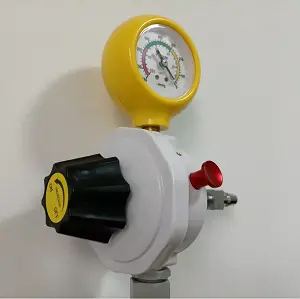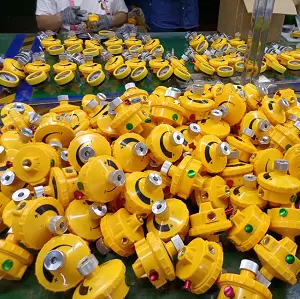A vacuum regulator manages pressure by controlling the evacuation speed of the vacuum pump while allowing a constant influx of atmospheric air into the chamber.
As the name suggests, it is a device that regulates or controls the pressure in a vacuum system. It plays a vital role in maintaining the required vacuum pressure levels, ensuring efficient system operation.

The main function of a vacuum pressure regulator is to stabilize and control the pressure within the system. It does this by regulating the flow of gas or liquid into or out of the vacuum system. By doing this, you can ensure that the pressure remains within the specified range, preventing any damage or inefficiency that may be caused by excess pressure.
One might wonder, why is there a need to regulate the pressure in a vacuum system? Well, there are several reasons for this. First, different applications require different levels of vacuum pressure. For example, in industries such as semiconductor manufacturing, pharmaceuticals and even aerospace, precise control of pressure is critical to the quality and efficiency of the associated processes.
Additionally, changes in temperature or external factors can affect the pressure within the vacuum system. Without the proper pressure regulator, these fluctuations can cause inconsistent performance or even system failure. These variations can be mitigated by using a vacuum pressure regulator, ensuring consistent pressure throughout the system.

Now let's talk about how a vacuum pressure regulator actually works. Regulators are made up of several components, including a diaphragm, valve, and spring. The diaphragm is responsible for sensing the pressure within the system. As the pressure deviates from the desired setpoint, the diaphragm moves, triggering the regulator's response.
As the diaphragm moves, it adjusts the position of the valve. This in turn controls the flow of gas or liquid into or out of the system. The spring provides the necessary force to counteract pressure changes, ensuring the system remains within the desired range.
It is worth noting that the accuracy and reliability of the vacuum pressure regulator is critical. That's why manufacturers invest a lot of time and resources in designing and testing these devices to meet the highest standards. Additionally, regular maintenance and calibration are essential to ensure optimal performance of your regulator over the long term.
In summary, vacuum pressure regulators play a vital role in maintaining the required pressure within a vacuum system. Their function is to stabilize and control the pressure, ensuring optimum performance and preventing any damage or inconsistency. By precisely regulating the flow of gas or fluid, these regulators provide the necessary control for a variety of applications in industries ranging from semiconductor manufacturing to pharmaceuticals. So next time you come across a vacuum system, remember the integral role that the vacuum pressure regulator plays in making it work seamlessly.
Post time: Jul-26-2023



